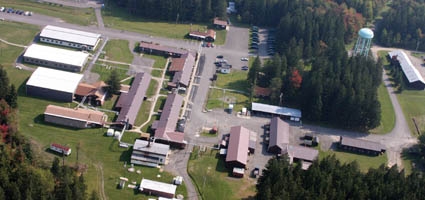State report says prospects for Camp Pharsalia re-use are grim
PHARSALIA – No end is in sight for the bill state taxpayers keep paying to keep round-the-clock maintenance on the buildings and 52 acres at Camp Pharsalia, and no plans for reusing the facility appear likely.
As promised, the New York State Department Of Correctional Services released a plan on Oct. 1 for the possible reuse of the camp and two other minimum security prisons closed by the state on July 1. But, as predicted, it wasn’t able to come up with an alternative.
DOCS has occupied Camp Pharsalia under the terms of a permit issued by the Department of Environmental Conservation since the mid 1960s. However, a state law enacted afterward requires the land upon which the camp is located to be a public park or reservation under the control of DEC.
According to the report, neither the sale nor the transfer of the camp buildings to a state or other government or private entity would be possible unless the DEC decides to lease it. The statute says the DEC may lease it, but the lease must be consistent with the reasonable use of the premises by the public.
Responding to the report, Commerce Chenango President Maureen Carpenter said she maintained hope and would encourage the parties involved “to evaluate all possibilities before we allow this asset to be discarded.”










Comments